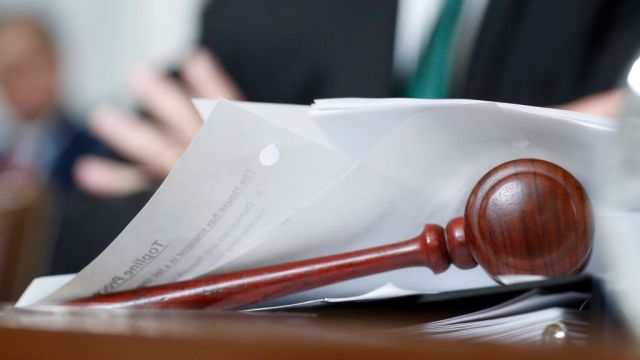
PHOTO: Kevin Dietsch/Getty Images
Robin Carnahan
Administrator at the GSA

Heading up the federal government’s General Services Administration (GSA), Robin Carnahan gets the understated task of being the federal government’s portfolio manager.
Carnahan was chosen to lead the 12,000-person agency that manages the government’s real estate, vehicles, IT and other resources in June 2021. She previously served as Missouri’s secretary of state, ushering in a period of renewed sanity to the role following her predecessor’s unwillingness to accept the 2020 presidential election results.
And no other federal agency is so tied to federal workers returning to the office in the D.C. region than the GSA. Labor deals that negotiated for more remote work have slowed the regular return to office of the roughly 365,300 federal workers in the area. At the same time, the GSA is involved in siting the new Federal Bureau of Investigations headquarters, likely either in Maryland or Northern Virginia. A decision could come any day.
The agency also has overseen a wave of investments to make federally owned buildings more environmentally sound, such as a recent $1 billion grant through the Inflation Reduction Act to make the federal portfolio zero emissions by 2045.
That investment will impact about 40 million square feet in the federal government’s portfolio — much of which is in the D.C. area and which is equal to about 20 percent of the 1,500 properties in its purview, according to the agency. About 28 buildings will become fully zero emissions while 100 others will become 100 percent electric.
Even before those investments, Carnahan and the GSA exceeded expectations on reducing building emissions. In April 2022, Carnahan announced that the GSA had already reached a 51 percent reduction of its portfolio’s annual greenhouse gas emissions, which beat by about a decade the federal goalpost of a 50 percent reduction. This helped keep the GSA financially lean by saving $80 million in energy costs in 2021.
The GSA isn’t only saving and investing in green building infrastructure. It’s also offloading assets that may be a little anachronistic in the digital age.In May, the agency said it would be giving away six lighthouses to nonprofits and government entities while auctioning four others to the public. All the recipients of the free lighthouses would have to do is promise to maintain the historic structures on the coasts of New England and the Great Lakes, according to The New York Times.










